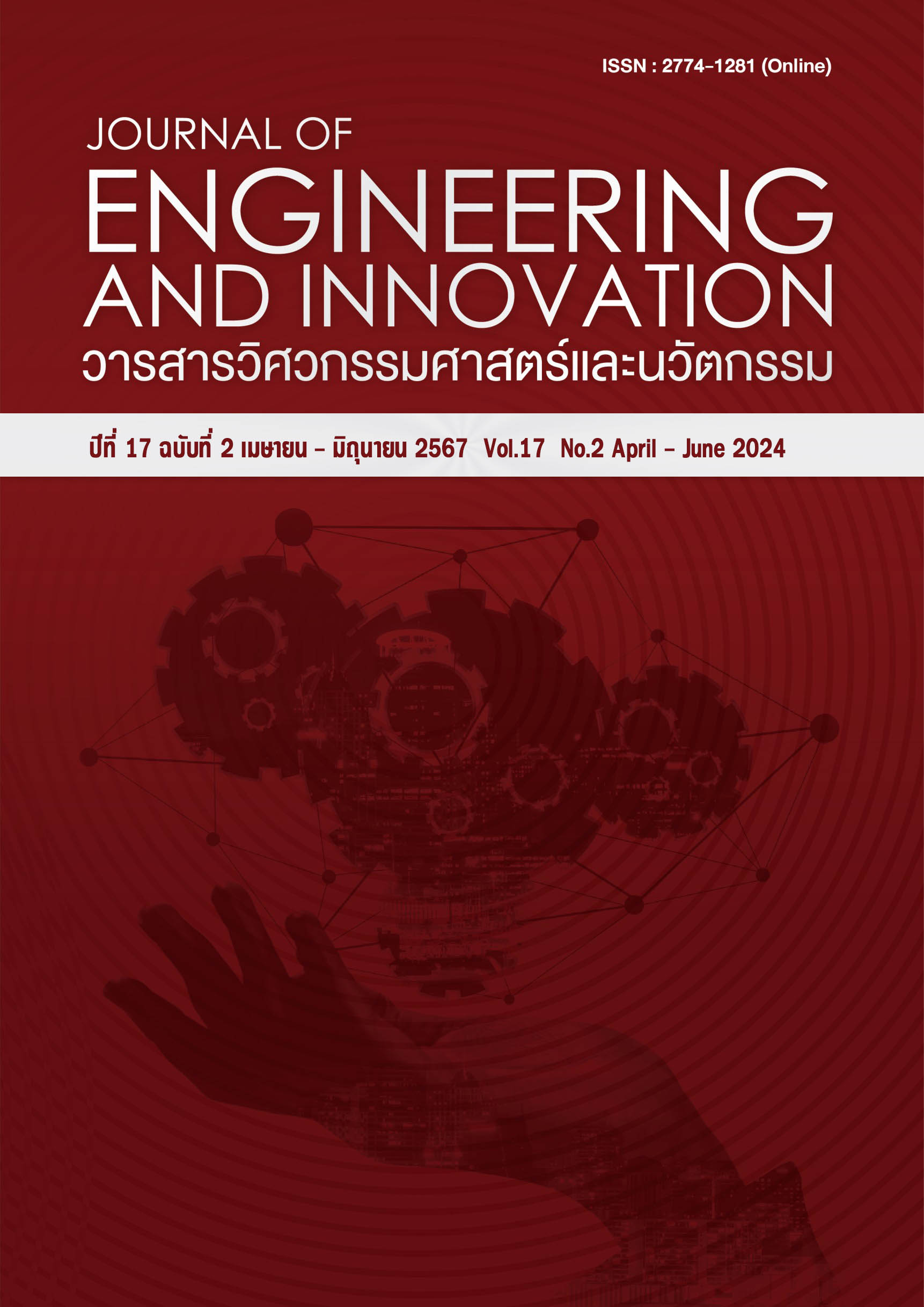Maximum power point tracking of stand-alone photovoltaic system using fuzzy logic based on P&O method
Main Article Content
Abstract
This paper presents a maximum power point tracking (MPPT) for stand-alone photovoltaic (PV) system. The considered system consists of a PV panel connected to a buck converter and a battery used as energy storage. The MPPT commonly used perturb and observe (P&O) method because the control is simple. The efficiency of the P&O MPPT method depends on the appropriate step size of control signal. The duty cycle rate of change () was used as a step size of control signal. Fuzzy logic control (FLC) can be used for non-linear tasks, resulting in a wide variety of applications. In this paper, FLC is used to determine the to optimize to increase the control efficiency. The proposed MPPT method performance is proven by using MATLAB/Simulink, Laboratory prototype and 2.4kW prototype applied to water distribution control house of the university farm, Suranaree University of Technology. The simulation and experimental results demonstrate the effectiveness of the proposed MPPT method. The proposed algorithm can provide the faster maximum power convergence and can reduce steady-state power fluctuations better than those of P&O method.
Article Details
References
Trishan Esram, Patrick L. Chapman “Comparison of Photovolaic Array Maximum Power Point Tracking Techniqued” in IEEE Trans., Energy Conversion., Vol.22, No2, pp 439-449, July 2007
D. K. Sharma, G.Purohit, “Advanced Perturbation and Observation (P&O) based Maximum Power Point Tracking (MPPT) of a Solar Photo-Voltaic System” in IEEE, 2012
Ratil H Ashique, Zainal Salam, Jubaer Ahmed, “An Adaptive P&O MPPT Using a Sectionalized Piece-wise Linear P-V Curve” in IEEE, 2015
Maissa Farhat, Oscar Barambones, Lassaad Sbita “A Real-Time Implementation of MPPT-Based on P&O Method” in IEEE, 2016
HAYDER Wafa, ABID Aicha, BEN HAMED Mouna, “Steps of duty cycle effects in P&O MPPT algorithm for PV system” in IEEE, 2017
Murari Lal Azad, Soumya Das, Pradip Kumar Sadhu, Biplab Satpati, Anagh Gupta, P. Arvind “P&O algorithm based MPPT technique for solar PV System under different weather conditions” in ICCPCT, 2017
S. Uma Ramani, Sathish Kumar Kollimalla, B. Arundhati “Comparitive Study of P&O and Incremental Conductance method for PV System” in ICCPCT, 2017
Aicha Djalab, Ali Teta, Mohamed Mounir Rezaoui, Mohamed Boudiaf, “Analysis of MPPT Methods: P & O, INC and Fuzzy Logic (CLF) for a PV System” in CEIT, 25-27 October 2018, Istanbul, Turkey
Kriti Jain, Prof. Manju Gupta, Dr. Aashish Kumar Bohre, “Implementation and Comparative Analysis of P&O and INC MPPT Method for PV System” in IEEE, 2018
Mohammed Zerouali, Salaheddine Zouirech, Abdelghani El Ougli, Belkassem Tidhaf, Hafida Zrouri, “Improvement of Conventional MPPT
Techniques P&O and INC by Integration of
Fuzzy Logic” in IEEE, 2019
Dikshita Nath, Tilok Boruah, “P&O and Fuzzy based MPPT for PV System” in IEEE, 2020
Dr. szemes, Peter Tamas, Masoud Melhem, “Analyzing and modeling PV with "P&O" MPPT Algorithm by MATLAB/SIMULINK” in IEEE, 2020
Savita Baraskar, Sachin Kunmar Jain, and Prabim K.Padhy “Fuzzy logic assisted P&O based improved MPPT for photovoltaic systems,” in Proc. ICETEESES – 16, March 2016
Bibhu Prasad Ganthia, Rosalin Pradhan, Sibani Das, Sibani Ganthia, “Analytical Study of MPPT based PV System using Fuzzy Logic Controller” in ICECDS, 2017
Dilovan Haji, Naci Genc, “Fuzzy and P&O Based MPPT Controllers under Different Conditions” in ICRERA, Paris, FRANCE, Oct. 14-17, 2018
Jaldeep Kumar, Jaldeep Kumar, Prakash Bahrani, “Fuzzy and P&O MPPT Techniques for Stabilized
the Efficiency of Solar PV System” in GUCON, Greater Noida, UP, India. Sep 28-29, 2018

